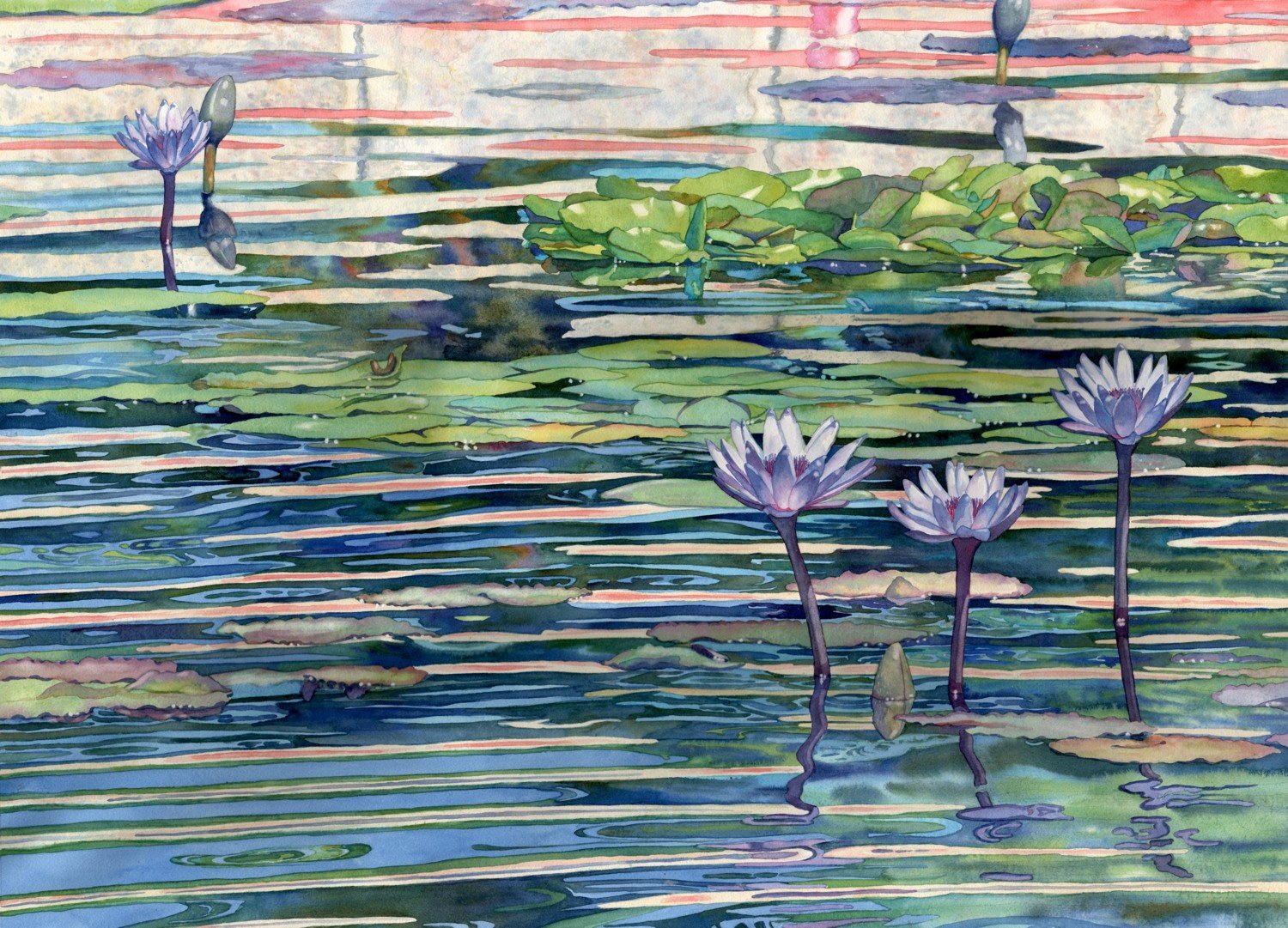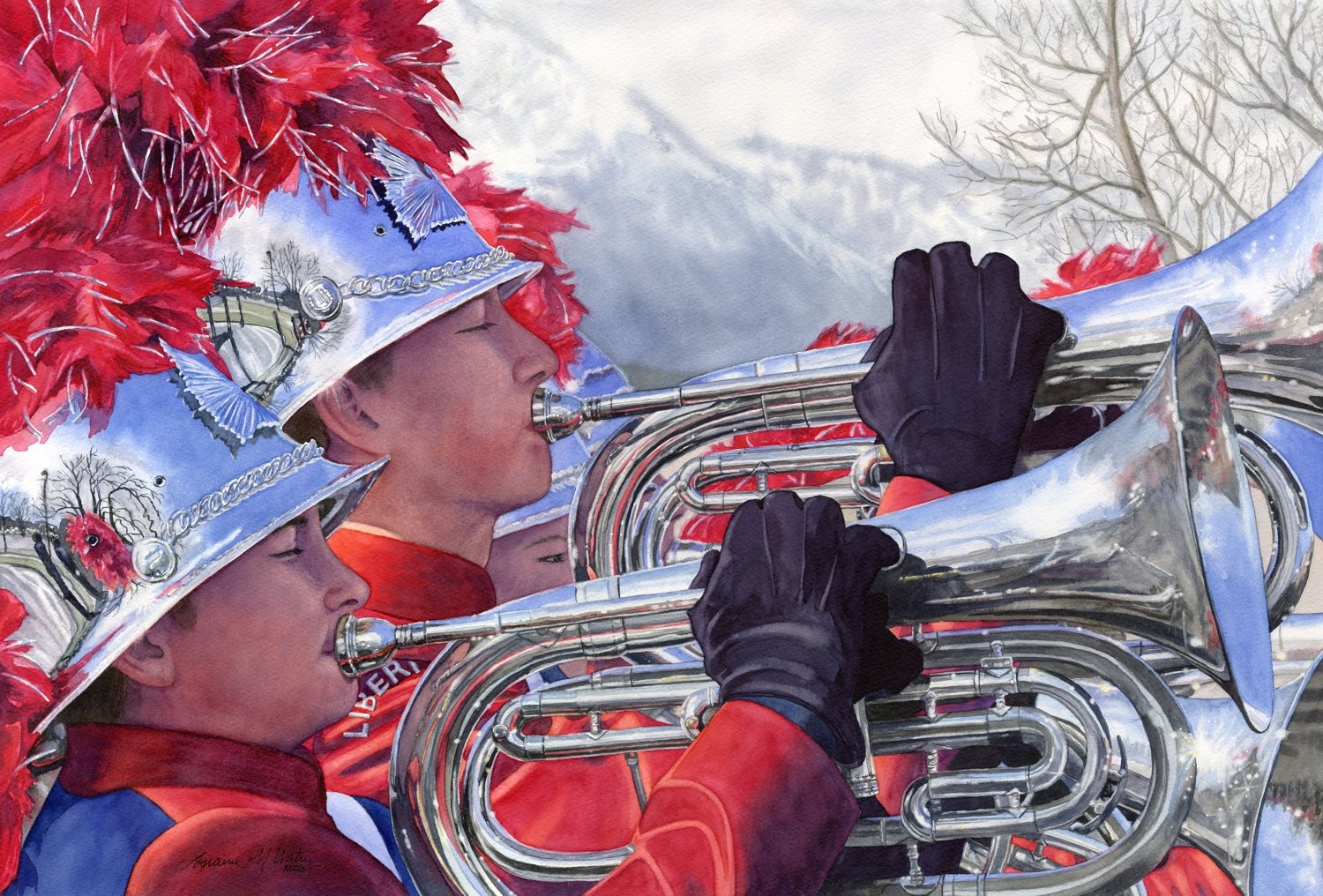Painting Reflections Comparison in Water, Glass, and Metal by Lorraine Watry
Reflections in water, glass and metal can be very interesting to paint. There are some similarities and differences between the three reflection subjects. In all three cases, it’s the reflections that can make the subject interesting. The reflections are used to help create the piece of glass or metal. Reflections in water can help give form, direction, and context.
Water Reflections
© Stained Glass Waterlilies by Lorraine Watry
Surface - Reflections in water are generally on a horizontal surface. As in the case of waves, there is movement in the water that can vary the surface to almost vertical.
Shapes – The reflections on the surface of the water can be almost “mirror-like” or they can be very abstract. The shapes are often somewhat horizontal lines, sometimes swirling shapes around objects, and some angles depending on the flow of the water and what is reflected.
Colors – The color of reflections can depend on what is reflected on the surface, such as a brightly colored boat or a swan. The sky will often be reflected on the water. Shadows on the water can make openings to see objects, like rocks or fish, below the surface. The color of the water will make a difference in the color of the reflections. The time of day and the atmospheric conditions can also have an effect on the color of the reflections.
Edges – You can have both hard and soft edges occur in water reflections.
Glass Reflections
© Bottles and Bubble Wrap by Lorraine Watry
Surface - Glass reflections can be on a variety of surfaces and in a variety of forms. The type of glass used to make the object, such as cut crystal vs. smooth glass, can affect the reflections.
Shapes – The reflections on the surface of glass tend not to be “mirror-like” (unless it is a mirror or glass window). The reflections are usually distorted due to the shape of the glass and can often be very abstract.
Colors – There can be a huge variety of colors depending on what is being reflected, the lighting, and the color of the glass. Colored glass will change the color of the reflection and generally cause the reflection to be muted or it may cause a visual-mix of colors. You will often see grays, blues, and purples in clear glass or a variety of color depending on the objects around the piece. The thickness of the glass can also change the colors we see in the reflections.
Edges – You can have both hard and soft edges occur in water reflections.
Metal Reflections
© Feathers and Brass by Lorraine Watry
Surface – Metal reflections are more like glass reflections because there are a variety of surfaces and shapes. The kind of metal (gold, silver, copper, brass) will make a difference on the look of the reflections.
Shapes – The reflections on the surface of metal can be both “mirror-like” and abstract or distorted depending on the form of the metal and how shiny it is.
Colors – The color of the reflections in metal are similar to both water and glass. The reflected colors are depend on the color of the metal object and how shiny it is. The color of the metal will often shift the colors reflected into it. Metal can show the blue of the sky if it is outside. There can be both strong and muted colors reflecting on metal. The lighting can make a difference on how bright or muted the reflected colors appear.
Edges – You can have both hard and soft edges occur in water reflections.



